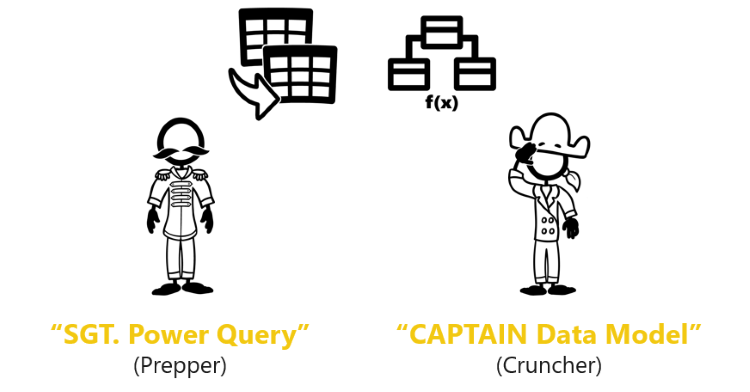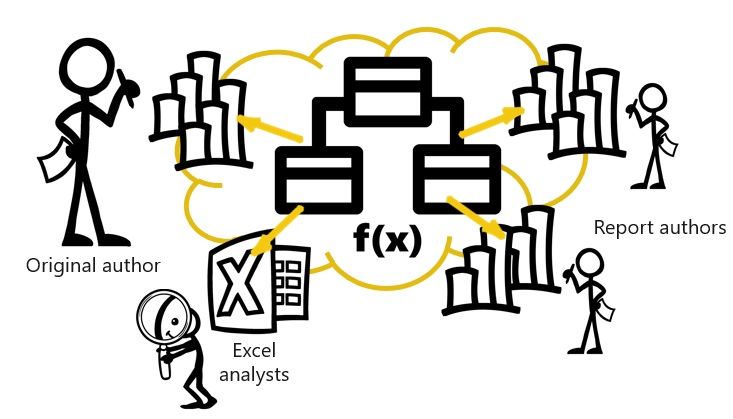Roles of modern analytics
Modern analytics roles in action: The tech
It's important to understand how the roles of Power Query and Data Model are relative to each other. The premise of the following analogy might seem unusual, but it might help you remember the basic details. Consider a scenario where these tools are referred to as Sergeant Power Query and Captain Data Model. Captain Data Model does the data crunching (or analysis). Sergeant Power Query connects to messy, disparate data sources to clean, prepare, and shape the data for crunching.

Essentially, Data Model creates business value; however, it can't do its job without Power Query feeding it the correct data. It might be tempting for new learners to use Power Query to crunch data and build most of the analysis. However, we don't recommend that approach because you miss what Data Model can do for you.

Operationally, Power Query comes first. It connects, cleans, prepares, and transforms data for Data Model. In the current modern analytics landscape, it's best to create the data model in Power BI Desktop. Then publish, share, and consume the data in Power BI service, Excel, or even in Microsoft Teams or SharePoint.
Modern analytics roles in action: The people
The technologies of Power Query, Data Model, Power BI Desktop, and Power BI service have specific roles to play together to achieve modern analytics, as do the people in your organization.

A published data model represents a certified single version of the truth. However, you might want to know where the data model comes from. The original author, a knowledgeable data expert who is familiar with the business data sources, develops and designs the data model to target key business problems and metrics.
A Power BI admin can promote and certify the data model, empowering other report authors to find, create, and share reports and dashboards.
Business users can use Power BI or Excel to uncover data trends or other insights to inform business decisions and drive results.
Consider a scenario where you have a single version of the truth data model for your finance, sales, healthcare, manufacturing, or other industry business question. This situation is an aspiration, and it's a possibility with modern analytics by using Excel and Power BI.